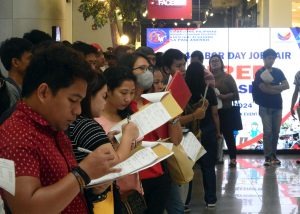The provincial government of Davao Oriental, the southeastern most part of the Davao Region, is looking at drafting a 10-year plan to enhance the agriculture and tourism sectors.
To achieve this goal, Gov. Nelson L. Dayanghirang has ordered his department heads to reengineer their units in six months by coming up with comprehensive plans that will maximize the potentials of the two sectors.
In a planning session last week, Dayanghirang said the provincial officials “need to think outside the box” in order to come up with key programs that will ensure that potentials of both sectors will be maximized.
One example on the proposal is how to increase production of the coconut industry through industrialization as the crop is not only the main livelihood of the province, but the data from the Provincial Planning and Development Office pointed out that coconut production in 2013 dropped by 54.6% compared with 2012, or after Typhoon Pablo bulldozed about six millions of coconut trees.
Although it has been the top nut producer in the Davao Region, the province has among the lowest yield per area as, based on the 2013 data, while Davao del Sur and Davao City increased their yield to 9.36 metric tons per hectare (MTH) and 7.99 MTH, respectively from 8.84 MTH and 7.71 MTH, respectively; Davao Oriental’s production went down to 4.9 MTH that year from 6.8 MTH the previous years.
Another issue that is hounding the industry is the low prices as copra, the main by-product of coconut, is sold not more than P20 a kilogram in farm gate price. Ednar G. Dayanghirang, cousin and chief of staff of the governor, told the TIMES that it is important both for the province and the national government “to find solution to the problem, or the industry will die a natural death.”
The industry is also facing problems of pests, lack of fertilizers and old trees, the reason that yield has gone lower. Another problem is that the area devoted to the crop has continually reduced that, between 2012 until 2017, the reduction was at the rate of 1.5% annually
Initially, the governor said there is a need for coconut farmers to be organized into cooperatives so they can seek funding for their projects.
He added that the provincial government is looking at investing in technology to industrialize the industry. “This would help maximize the value of products and services as means of improving farmers’ income, generating more and better employment to ensure stable and progressive economy,” he said.
Tourism, the governor said, is also another sector that needs a strong focus because the province has slowly become a top destination in this part of the country.
Based on the data of the provincial government, from 91,165 tourists in 2012, the province attracted 801,479 tourists in 2015.
Among others, the province is home to Mt. Hamiguitan Range and Wildlife Sanctuary, a forested area in the province known for its bonsai farm and was declared by the United Nations Educational, Scientific and Cultural Organization as a World Heritage Site.
But the provincial government noted the lack of accommodations and other amenities that will satisfy the standards of tourists, other infrastructure facilities and the seeming lack of private funds for the industry.
Although it has taken some steps including obtaining a loan that will improve its facilities like the Provincial Tourism Complex, the provincial government is also looking into other actions that will help the industry.
The governor said the provincial government has secured a P2.5 billion fund from the House of Representatives for tourism roads and a sports complex.
“Now is the right time to set our direction especially now that we have already experienced a lot of positive changes, particularly on our peace and order. Our investments on development have also started to bear fruits,” he said.
DavOr drafts 10-year plan for agri, tourism
More from BUSINESSMore posts in BUSINESS »


